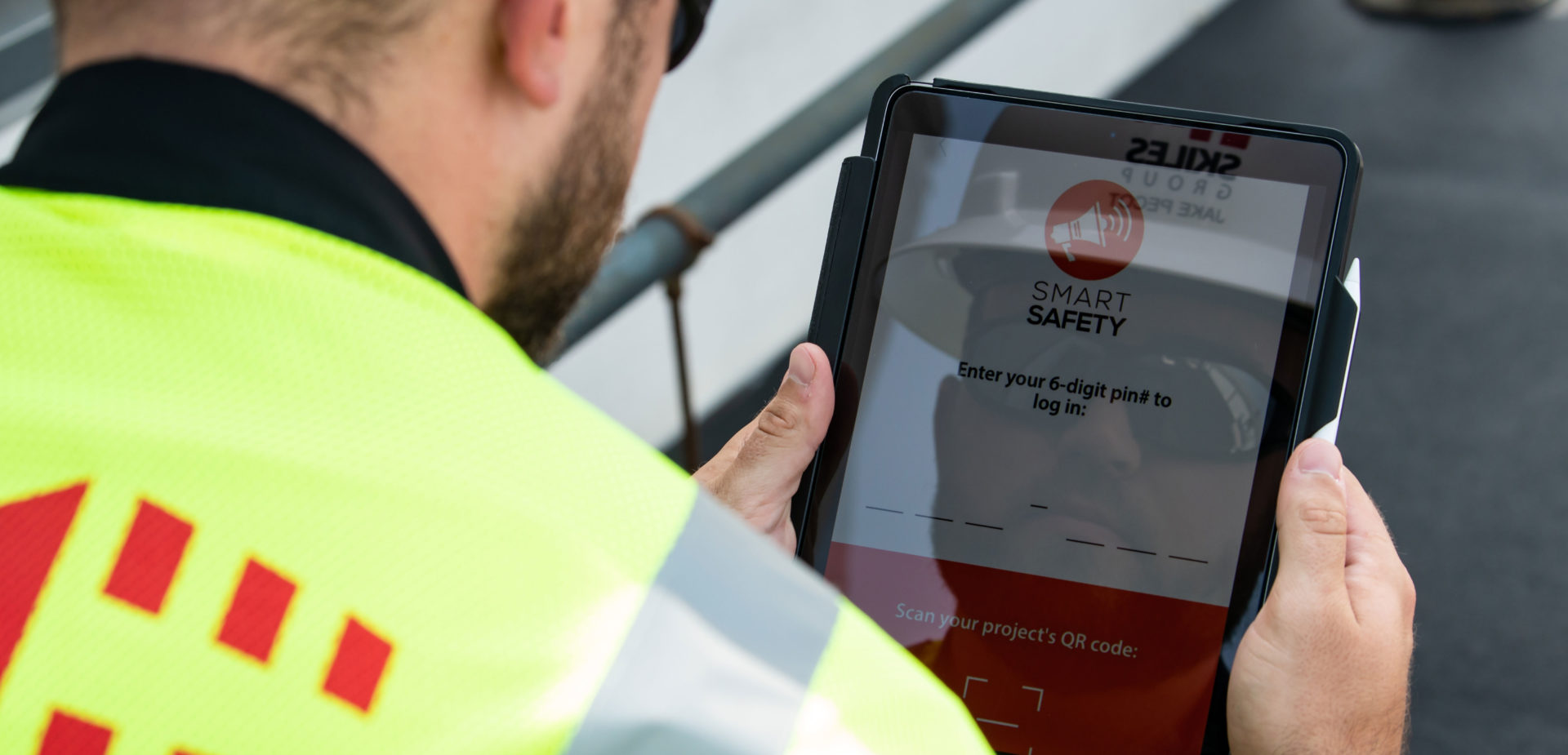| |
2156
0
From Paper to an App: Continuous Improvement in the Age of Technology

Continuous improvement in the age of technology can mean a process leaps from a sheet of paper into the ether with a custom app. After struggling to design and print legible, project-specific crisis management cards for our workers in the field to carry and easily reference, and in a quest to improve our emergency response times and our communications with our team members, we explored several existing tools, technologies, and processes that might be deployed to strengthen our safety protocols. When we couldn’t find a solution that met our needs, we developed our own crisis management app, Smart Safety, which is currently in beta testing.
Smart Safety immediately delivers emergency notifications and other relevant information to every person onsite, which is especially helpful on larger jobsites and for those working across multiple floors. Our patent-pending technology provides end users and administrators with one-click access to site-specific emergency protocols and resources, and provides both crisis management and everyday safety information for field staff on all active sites. Each onsite team member – whether a Skiles Group employee or a trade partner employee or contractor – downloads the app on a smart phone and then “checks in” to the project’s jobsite by scanning a QR code at the site’s entrance. Each project site is loaded into the app with geolocation and geofencing, project-specific emergency action and evacuation plans, rally points, locations of fire extinguishers, and directions to nearest hospital, fire, and police stations.
A company filled with curious thinkers can accomplish great things. When all team members are encouraged to bring their ideas forward, it cultivates an open-minded culture of exploration, where people consistently ask “why” and strive to find simpler, better, or completely new ways to do things.
If a team member sees an emergency, with one-click access they can alert the site supervisor with a code to the specific issue (such as medical, fire, etc.) and with an automatic tag to the exact location of the situation with geocoordinates. The supervisor then verifies and issues the full alert to all users within the site boundaries. All team members who are checked in to that jobsite then receive an immediate push notification that provides both the details of the emergency and the immediate next action steps to follow.
While a 911 call is always the first step, the push notifications to every team member provide better information, reduce confusion and chaos, and ultimately enable employees and trade partners to either exit an emergency scene quickly or to suspend work or stay clear of an emergency scene occurring in another part of the jobsite. Once the situation is resolved, the team members receive an update for “all-clear” to resume work.
Five years ago, Skiles Group made the strategic decision to go “all in” on Lean, and it has been one of the best decisions we’ve ever made. One of the Lean Construction Institute’s “6 Tenets of Lean” is Continuous Improvement, a philosophy that has woven itself into the culture of our firm. It’s in that spirit that Smart Safety was born, and it’s in that spirit that we will soon make Smart Safety available to other construction firms. Part of the value the app brings is that goes well beyond the current minimum OSHA requirements (29 CFR 1910.38, Emergency Action Plans). In the interest of continuous improvement and pushing our industry forward, especially within the realm of safety, we want to make Smart Safety widely available to all interested companies so they too can improve their own crisis management processes.
. . .
Learn more about Lean Design and Construction and LCI’s Lean tenets at www.leanconstruction.org.
Learn more about Smart Safety at www.SmartSafetyAlert.com.